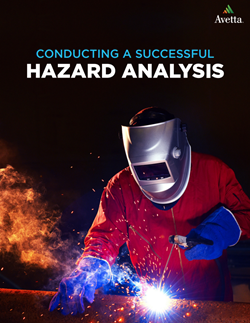
Conducting a Successful Hazard Analysis

A hazard analysis employs various techniques to identify possible job or task-related risks before they occur. It involves analyzing every stakeholder or component for a particular task – the workers, the machines or tools, the working environment, and the task itself. The core objective of this practice is not just identifying existing hazards, but also eliminating conditional and operational changes that create the hazards.
In this whitepaper, you will learn:
- What to include before, during, and after a hazard analysis for the greatest success
- By viewing an example of an effective job hazard analysis workflow
- How to simplify the process
This whitepaper was co-written by the safety thought leader, Tim Page-Bottorff CSP, CIT.
Download Whitepaper

Sponsored by Avetta:
Avetta offers a configurable SaaS-based solution that assists organizations – both large and small – in managing supply chain risk across a variety of disciplines. Avetta is building the world’s most intelligent supply chain risk management network to advance clients’ safety, resilience and sustainability programs. Avetta leads the world in connecting leading global organizations across industries, including telecom, construction materials, manufacturing, facilities management, high tech and energy with qualified and vetted suppliers and contractors. The company brings unmatched access and visibility to its clients’ supply chain risk management process through its innovative and configurable technology coupled with highly experienced human knowledge and insight. We contribute to the advancement of our clients’ sustainable growth by protecting supply chains from a wide range of potential risks through trusted contractor prequalification, safety training and monitoring, regulatory compliance, insurance/financial stability and other areas of risk. Avetta serves more than 450 enterprise companies and 100,000 suppliers across 100+ countries.